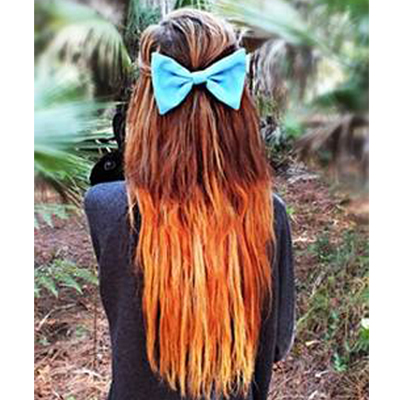5 Techniques to Prevent Color Fails!
A red that was supposed to be classic ends up clownish instead. Darkened hair turns out muddy or green. Over-highlighted strands eclipse the hair’s base color. Prevent these and other haircolor disasters before they start with tips from some top tinters.
1. Create Separate Colors for Separate Zones
Not all areas of the hair are created equal. To get the uniform color your clients want, you often need to create separate formulas for the roots, midshaft and ends. “Don’t overlap and pull color through every time a client comes in,” says Linda Yodice, artistic director of Paul Mitchell The Color. “Your midshaft and ends will lighten too much. Or, the toner will overtone because the underlying pigment has already been removed.” Instead, lift only the regrowth and refresh the remaining hair with a demi-permanent product.
2. A Dab Will Do Ya
Even a great formula won’t work if it isn’t applied properly. Haircolor Expert James Jordan recommends “placing” color, not “brushing” it. This doesn’t mean you have to abandon your favorite bristles and go back to the bottle—you can still use your brush. Just dab color onto hair, instead of sweeping it repeatedly down a section. “Brushing essentially wipes off color,” says James. This can lead to problems like incomplete gray coverage.
3. Study Your Sections
Less than careful application can lead to over-highlighting, too. When refreshing a client’s highlights, study your sections as you pick them up and place them in the foil packets. “With each one, you should see that 75 percent of the hair you have picked up has already been lightened,” says haircolor expert Rowena Cutrozzola. “If 75 percent is dark, you need to subdivide that section and only put the lightened hair in the packet.” You will never pick up exactly the same highlight strand each time a client comes for an appointment, but you can make sure her “sun-kissed streaks” don’t take over the entire head and eclipse the base color.
4. Watch Out for Too-Thick Pieces
“The rule of thumb is to be able to read a newspaper through the section,” says James. If the section isn’t skinny enough, not all hair will be able to fully absorb the color, leaving you with spotty results, or peek-a-boo gray.
5. Fill It In
There’s one scenario that can make any colorist cringe—when an extremely lightened client wants to return to her original darker color. “Unless you want muddy or green results, you have to know how to fill hair,” says Rowena. “That means returning the underlying pigment that has been stripped away.” To start, Rowena suggests adding orange and red filler. Then, either place the light brown formula directly on top of the filler, or rinse hair first. “To make sure you’ve added enough tone back into hair, you can rinse all the filler out—or just take one strand and wipe it clean,” says Rowena. Make sure to clearly communicate to these clients that their restored color will fade, and they may need to return for a color wash in as little as two weeks.







